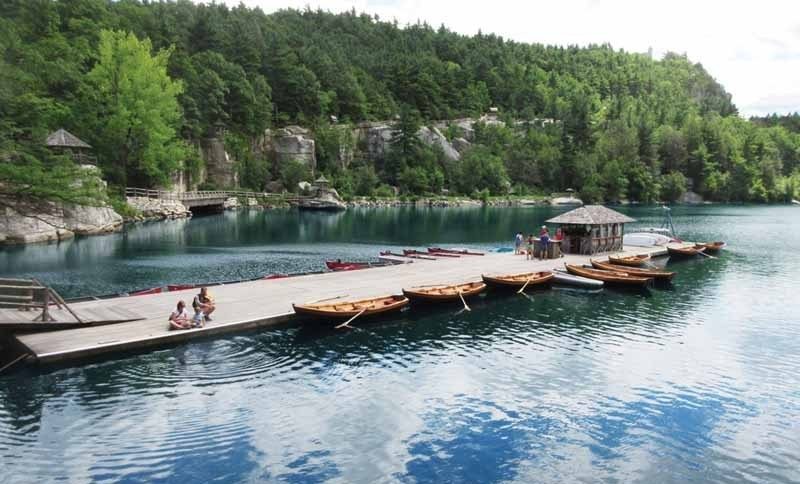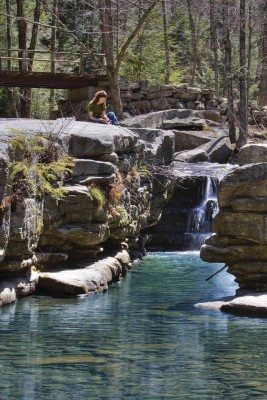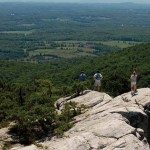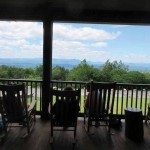
When Garvan McCloskey of Garvan’s, the new gastropub in New Paltz, worked at a restaurant in the town center, a mile away, his opening line to a family coming in was “What part of Long Island are you from?” Most times he would be right to identify them as Long Islanders, not because we look so different but because so many Long Islanders attend SUNY New Paltz. “This year, nearly 30 percent of our undergraduates are from Long Island,” said Melissa Kaczmarek of the college’s office of communication. Approximately 400 freshmen from Long Island will be making their home there for the next four years.
Which means that some of you reading this paper will be traveling back and forth during that time and looking for interesting activities to do with your children or on your own.
I like New Paltz and have been there several times—once to visit the daughter of a friend studying there and other times because the area is beautiful. It’s a relaxed town with some remnants of its hippie years. There are always new restaurants and shops. In my most recent visit I stayed at Buttermilk Falls Inn in Milton, about 20 minutes out of town, and enjoyed a meal at the adjacent Henry’s, a farm-to-table restaurant where we sat on the deck overlooking the ducks and swans in the pond below, hoping that their troop of rescue llamas would come by.
A visit to Mohonk Mountain House needs to be on your to-do list. Mountain house does not mean a log cabin in the woods. This grand, 147-year old Victorian mansion—extending for one-sixth of a mile—welcomes day visitors, so it is not necessary to be an overnight guest to enjoy what the property has to offer. That includes golf, tennis, an award winning spa, canoeing, 85 miles of hiking trails, ice skating and cross-country skiing.
There are lots of alcoves and porches to sit and chat and enjoy the view of the Shawangunk Mountains, and three dining rooms for meals. The house was built by the Quaker Albert Smiley. One of my favorite bits of history about the house—aside from the fact that it hosted five former U.S. presidents (Hayes, Arthur, Theodore Roosevelt, Taft and Clinton)—is that in 1912 Smiley was nominated for the Nobel Peace Prize for his annual Lake Mohonk Conference on International Arbitration. These meetings laid the groundwork for the United Nations.
Active recreation is also available at nearby Mohonk Preserve. With 7,500 protected acres, Mohonk Preserve offers hiking and running trails, mountain biking and horseback riding (you can bring your own bike or horse), nature experiences for young children and rock climbing. Climbing “The Gunks” is a major attraction; these vertical cliffs and their overhangs create a wide variety of high-quality climbs of varying difficulty. National Geographic says that the Gunks are “the climbing equivalent of skiing Jackson Hole: they’re the ultimate proving ground.”
If you and your student scholar want to set a goal for yourselves, sign up the Rock the Ridge on May 6, 2017, unless it interferes with finals. Rock The Ridge is a 50-mile endurance challenge and environmental fundraiser set in the preserve. The goal is to traverse a 50-mile course within 24 hours by walking, running or any combination thereof. You can do it in a team with all covering the course together or as a relay with up to four people.

For less strenuous exercise, there’s the Walkill Valley Rail Trail. This former railroad is for non-motorized use, including walking, running, bicycling, horseback riding, cross-country skiing and snowshoeing. The 24-mile trail offers views of the Shawangunk Mountains and local farms, and passes through Gardiner, New Paltz and Rosendale, ending at the southern border of the city of Kingston. You’ll also want to make time for the pedestrian bridge called Walkway Over the Hudson.
Put some history in your walk by taking a guided tour of historic Huguenot Street back in New Paltz to learn about the early European settlers who shaped the area. The Huguenots were French Protestants who were inspired by the writings of John Calvin. They were called heretics and there were many attempts to exterminate them. Thousands fled France and in 1678 a group of Huguenot families settled in the Hudson Valley in an area that had been occupied by the Lenni-Lenape tribe and then the Dutch.
This National Historic Landmark contains seven stone houses, a reconstructed church, archaeological sites and a burial ground. The names of the founding families might sound familiar—many of the dorms at the university are named for them.
Has all this exercise and touring made you thirsty? Quench your thirst in the tasting room at Weeds Orchards and Winery, one of the many wineries and orchards in the Hudson Valley. You can try their own wine plus 20 different varieties of wine, hard cider and beer from all over New York State. There is also a restaurant on site and music on the weekends. If you stop at the orchard before heading back to Long Island you can pick-your-own vegetables, fruits and flowers. In additional to several varieties of apples, they expect to have tomatoes, green beans, yellow squash and kale in September.
Visit www.UlsterCountyAlive.com for information.























